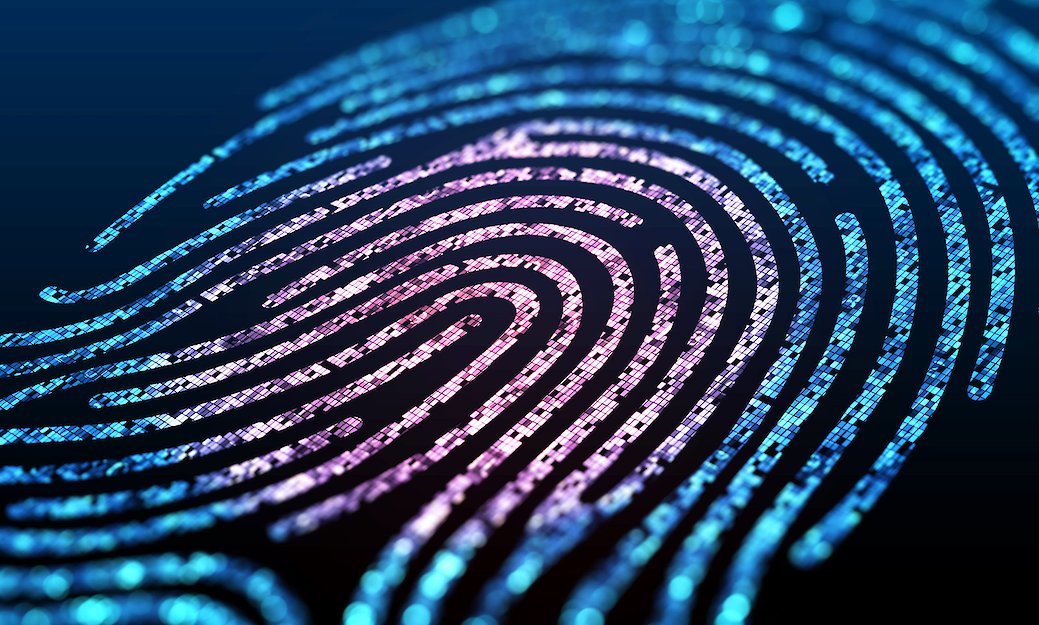Directors are now required to register for a unique identification number that they will keep for life.
What is a director ID?
A director ID is a 15 digit identification number that, once issued, will remain with that director for life regardless of whether they stop being a director, change companies, change their name, or move overseas.
The introduction of the Director Identification Number (DIN) is part of the Government’s Modernisation of Business Registers (MBR) Program creating greater transparency, and preventing the potential for fraud and phoenix company activity. The MBR will unify the Australian Business Register and 31 ASIC business registers, including the register of companies. In effect, the system will create one source of truth across Government agencies for individuals and entities and will
be managed by the Australian Taxation Office (ATO).
For those concerned about their privacy, the director ID will not be searchable by the public and will not be disclosed without the consent of the Director.
Who needs a director ID?
All directors of a company, registered Australian body, registered foreign company or Aboriginal and Torres Strait Islander corporation will need a director ID. This includes directors of a corporate trustee of self-managed super funds (SMSF). You do not need a director ID if you are running a business as a sole trader or partnership, or you are a director in your job
title but have not been appointed as a director under the Corporations Act or Corporations (Aboriginal and Torres Strait Islander) Act (CATSI).
The company secretary or officeholder should keep a register of the IDs of their directors in a secure place – director IDs are governed by the same privacy rules that apply to Tax File Numbers (TFNs) and should not be disclosed unless required.
Timeframes for registration
| Date you become a director | Date you must apply |
| On or before 31 October 2021 | By 30 November 2022 |
| Between 1 November 2021 and 4 April 2022 | Within 28 days of appointment |
| From 5 April 2022 | Before appointment |
For Corporation Act directors:
| Date you become a director | Date you must apply |
| On or before 31 October 2022 | By 30 November 2023 |
| From 1 November 2022 | Before appointment |
For CATSI directors:
If the company intends to appoint new directors, it will be important to ensure that they are aware of the requirements and timeframes to establish their director ID if they do not already have one.
How to set up a director ID
If you are an Australian resident director, you will need to complete a number of steps and have a number of identification documents available and ready (for non-resident directors see Foreign directors and the director ID system below).
1 Verify your identify
If you establish your director ID online, and you have not already set up myGovID, you will need to download the app onto your phone or device and create an account.
The myGovID does not create your director ID –
the app’s only purpose is to validate your
identity, and once validated, issue a code that can be used to identify you on government online services without going through the same verification process.
myGovID uses your phone/device’s camera to scan your forms of ID such as your passport, driver’s license and/ or VISA (check the documentation requirements here), to validate who you say you are. Be careful when you are scanning your documentation as the system does not always read the scan correctly.
2 Apply for your director ID through Australian Business Registry Services
Once you have set up your myGovID, you need to apply to the Australian Business Registry Services (ABRS) for your director ID. Use the email you used to create your myGovID to start the process.
In addition to your myGovID, you will need to have on hand documentation that matches the information held by the ATO. If you have a myGov account linked to the ATO, you can find the details on your profile. You will need:
- Your tax file number
- The residential address held on file by the ATO; and
- Two documents that verify your identify such as:
- Your bank account details held by the ATO
(on your myGov ATO account, see ‘my profile/financial institution details’).
- Dividend statement investment reference number
- Notice of assessment (NOA) – date of issue and the reference number (on your myGov ATO account, see Tax/lodgements/income tax/history).
- The gross amount from your PAYG payment summary
- Superannuation details including your super fund’s ABN and your member account number
The final stage requests your personal contact details (not the company’s).
Once complete, your director ID will be issued immediately on screen. This information should be provided to your company secretary or office holder.
If any of your details change, for example a change of residential address or phone number, you will need to update your details through the ABR. You will also need to notify your company within seven days (14 days for CATSI Act directors) and the company will then need to notify the Australian Securities and Investments Commission (ASIC) within 28 days.
Applying by phone or using paper forms
You can choose to verify your identify and apply for your director ID by phone (13 62 50) or on paper. You will need to have your identification documents available. If you are applying using the paper form, your identify documentation will need to be certified by an authorised certifier such as a Barrister, Justice of the Peace etc.
Foreign directors and the director ID system
Foreign directors of Australian companies have the same requirements and deadlines as Australian resident directors, however, the verification process is only accessible in paper form.
One primary and two secondary forms of identification are required to accompany the application that have been certified by a notary publics or by staff at the nearest Australian embassy, high commission or consulate, including consulates headed by Austrade honorary consuls. Primary forms of identification include a birth certificate or passport, and secondary include driver’s licence, foreign government identifier, or national photo identification card.
In the presence of the applicant, the authorised certifier must certify that each copy is a true and correct copy of the original document by sighting the original document, stamping, signing and annotating the copy of the identity document to state, ‘I have sighted the original document and certify this to be a true and correct copy of the original document sighted’. initialling each page listing their name, date of certification, phone number and position.
The form and the accompanying documents will need to be sent by mail to Australian Business Registry Services using the details provided.
Directors in name only
It’s important that anyone agreeing to be a director understands the implications. Being a director is not just a title; it is a responsibility. At a financial level, directors are responsible for ensuring that the company does not trade while insolvent. The by-product of this is that the directors may be held personally liable for the debt incurred. The director penalty regime has also tightened up in recent years to ensure that directors are personally liable for PAYG withholding, net GST, and superannuation guarantee charge liabilities if the company fails to meet its obligations by the due date. For many small businesses, the directors are also often personally responsible for company loans secured against property such as the family home.
Failing to perform your duties as a director is a criminal offence with fines of up to $200,000 and five years in prison.
Ignorance is not a legal defence. Don’t sign anything unless you understand the consequences.
Tax and the Normalisation of Cryptocurrency
The Australian Taxation Office recently updated its guidance on tax and cryptocurrency.
In early November, the Commonwealth Bank announced that it is now Australia’s first bank to offer customers the ability to buy, sell and hold crypto assets, directly through the CommBank app. You know when the banks come on board, cryptocurrency has become normal.
But cryptocurrency is only one part of the blockchain universe. Non-fungible tokens or NFTs (fungible means interchangeable) are one- of-a-kind digital assets which are part of the Ethereum blockchain. An example is the CryptoKitties game that allows players to purchase, collect, breed and sell unique virtual cats – and, before you laugh, the game transacted over $1 million in virtual cats in its first few days of launching.
NFTs are also rapidly rising in popularity in the artworld because ownership of the asset is on the blockchain and in some cases, the artist can take a percentage of every transaction of that artwork – so, no more starving artists because they can generate an income from the asset over time not just on the first sale. A stellar example is the sale of a NFT artwork by the digital artist Beeple, which was sold at auction by Christies in March 2021 for $69 million (USD).
Let’s look at what the Australian Taxation Office has to say about some of the commonly asked questions about the implications of investing in blockchain.
Is mining cryptocurrency income or an asset?
If you receive crypto from providing services to others, this can represent income. If you create crypto, you acquire a capital gains tax (CGT) asset. A taxing event will arise when you exchange crypto for Australian Dollars or another crypto asset.
Does the ATO really know about my crypto transactions?
The ATO is using various sources for data collection including digital service providers (DSPs) and analysis software to track taxpayer compliance. There are several data-mining projects (no pun intended) underway looking specifically at cryptocurrency and cryptocurrency platforms.
What happens if my cryptocurrency is stolen?
You may be able to claim a capital loss if you lose your cryptocurrency private key or your cryptocurrency is stolen. Generally, where an item can be replaced it is not lost. A lost private key can’t be replaced. Therefore, to claim a capital loss you must be able to provide the following kinds of evidence:
- When you acquired and lost the private key
- The wallet address that the private key relates to
- The cost you incurred to acquire the lost or stolen cryptocurrency
- The amount of cryptocurrency in the wallet at the time of loss of private key
- That the wallet was controlled by you (for example, transactions linked to your identity)
- That you are in possession of the hardware that stores the wallet
- Transactions to the wallet from a digital currency exchange for which you hold a verified account or is linked to your identity.
I mine cryptocurrency as a hobby so I should not have to pay tax on it?
Unfortunately, it’s unlikely mining for fun will allow you to avoid tax. The circumstances where you can generate cryptocurrency or transact it without paying tax are very limited.
Can I get a tax deduction for computer equipment purchased for mining?
If you are in the business of mining, then you can claim a deduction for the equipment you purchase to generate income. If you are not carrying on a business, then the crypto is
held as an investment and the equipment is not deductible.
How is my NFT artwork taxed?
As with any other cryptocurrency, an NFT can be held for personal use. Personal use assets are CGT assets that you keep mainly for your personal use or enjoyment.
NFT is not a personal use asset if it is kept or used mainly:
- As an investment
- In a profit-making scheme, or
- In the course of carrying on a business.
The relevant time for working out if an asset is a personal use asset is at the time of its disposal. During a period of ownership, the way that an NFT is kept or used may change (for example, NFTs may originally be acquired for personal use and enjoyment, but ultimately kept or used as an investment, to make a profit on ultimate disposal or as part of carrying on a business).
The longer an NFT is held, the less likely it is that it will be a personal use asset – even if you ultimately use it for personal use or consumption.
Capital gains you make from personal use assets acquired for less than $10,000 are disregarded for CGT purposes. However, all capital losses you make on personal use assets are disregarded. Collectables are not classed as personal use assets and may be subject to CGT.
Can my Self Managed Superannuation Fund invest in cryptocurrency?
The issue is not so much can you acquire cryptocurrency within an SMSF but should you? The June 2021 ATO statistical report shows that Australians held approximately $212m in cryptocurrency assets as at 30 June 2021- only 0.03% of total assets. The simple reason is that the volatility of cryptocurrency makes it harder to rationalise under Section 62 of the Superannuation Industry Supervision (SIS) Act, particularly if the asset allocation ratio of cryptocurrency assets in the SMSF is high. But,
it’s not impossible if managed correctly at an
investment and administrative level.
With Bitcoin as low as $14k on 13 September 2020, and $61k on 12 September 2021, it’s easy to see the appeal for investors with the appetite for risk (335% return across 12 months). In this same period, Ethereum grew 767%. But the world was in a different place in September 2020, not just in cryptocurrency.
Before investing in cryptocurrency there are a few things SMSF trustees need to be aware of:
- Trust Deed – the trust deed of the fund must allow for cryptocurrency assets. Most SMSF trust deeds are drafted broadly to enable trustees to invest in assets permitted by the superannuation laws and leave the investment strategy to manage the choice of assets and their appropriateness. However, it is important to check.
- Investment strategy – Your Investment Strategy is a major consideration with any investment
within an SMSF but with cryptocurrency’s high volatility and risks, there must be clearly articulated information in the Investment Strategy. That is, it must articulate the trustees’ plan for making, holding and realising assets in a way that is consistent with the retirement goals of members being mindful of the member’s individual circumstances.
- Separation of assets – it’s important that the cryptocurrency assets are held in a wallet in the name of the SMSF and the IP address is provided to the SMSF auditors to verify the transactions (against the fund bank account). Problems can often arise when a wallet (in the name of the SMSF) is connected to a personal credit card to acquire cryptocurrency. In these cases, the payment is seen as either a contribution or a loan to the SMSF.
The ATO also suggests you look at the diversity of the SMSF’s investments.
How tax applies to blockchain and the generation of income or assets is still a work in progress. Please contact us if we can assist.
SMSF COVID-19 Audit Relief Extended
The ATO has extended COVID-19 relief for SMSF trustees. The relief measures, which protect trustees from COVID-19 related contraventions of the super laws, now extend from the 2019- 20, 2020-21 and 2021-22 financial years. The relief measures provide:
- Residency relief where the pandemic has prevented members from returning to Australia. This measure prevents the SMSF from breaching the residency conditions to be an Australian super fund.
- Rental relief where a COVID-19 reduction, waiver or deferral has been provided to a tenant.
- Loan repayment relief where relief is provided on commercial terms.
- In-house asset relief where the SMSF exceeded the 5% in-house asset threshold at 30 June due to the impacts of COVID-19.
Overseas gifts and loans in the spotlight
The ATO has recently issued an alert on gifts or loans from overseas. The ATO is particularly concerned about schemes and arrangements designed specifically to circumvent Australian tax laws. In general, Australian-resident taxpayers need to declare their worldwide income in their Australian tax return. Some schemes however disguise offshore capital gains or income as a gift or loan.
So, how do the ATO know if money from overseas is a genuine gift or loan? Generally, the ATO will expect to see some form of evidence that the gift is genuine such as a deed of gift prepared by the donor, formal identification of the donor, a copy of the donor’s bank account, or in the case of an inheritance, the will or distribution statement from the estate.
If you have received a loan from overseas, the ATO will expect to see properly executed loan documentation, and other documentation supporting why the loan was made and its purpose. Third party documentation is best as documentation from a family member may not be accepted as conclusive evidence of a loan.
The ATO will form its view based on the evidence available.
Loans received from companies or trusts can still trigger tax issues in Australia.





